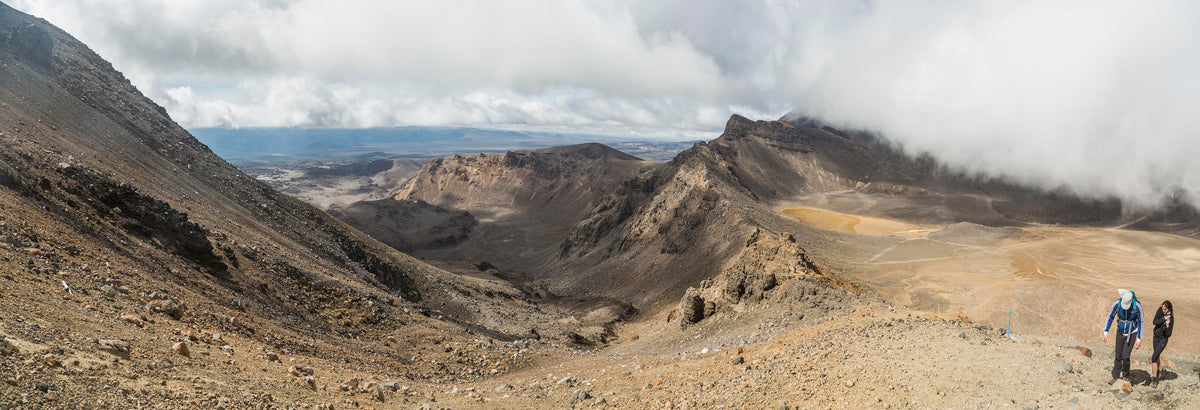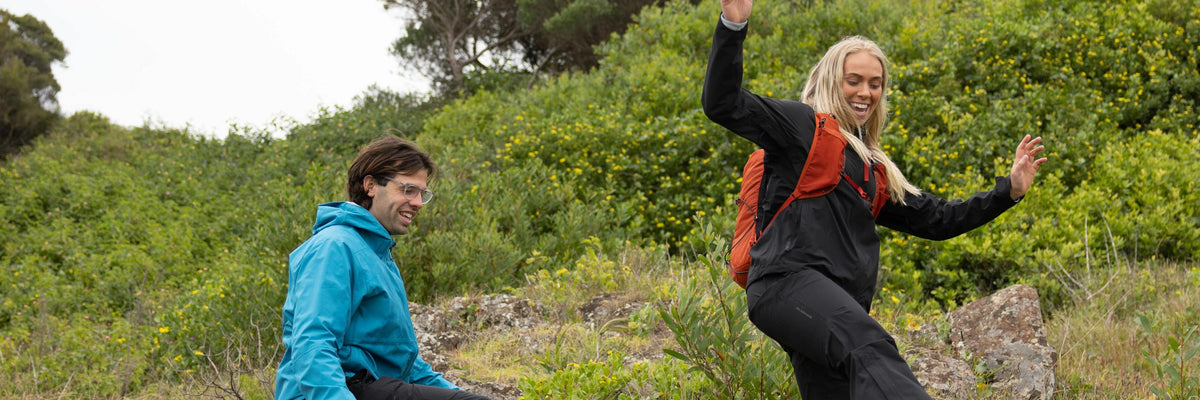Properly cleaning your tent can dramatically lengthen its life and practising good camp hygiene will make your life a lot easier. Besides a faster clean-up, you’ll help keep out stones, branches, and other sharp debris that can degrade your tent over time. Before you go, pack the essential tent-cleaning items. You’ll need a dustpan and broom, a soft cleaning sponge, and a little clean water.
BEFORE YOU LEAVE
Clean as you go If you’re camping for longer than a weekend, you should give your tent a sweep every second day. Dirt can still find its way in, especially if you’re camping in a big group, with kids, or anywhere within sneezing distance of the beach. Besides protecting the tent floor from abrasion, you’ll keep everything else you store in your tent, like sleeping mats and sleeping bags, free from grit and help extend their lives, too.
Enforce a no shoes policy Keep your shoes outside or in the tent vestibule. If you need to keep your shoes inside the tent for whatever reason (like bad weather or creepy crawlies), sit inside your tent with your feet out, remove your shoes, clap the soles together to remove any debris, use a toothbrush to clean the soles, and place your shoes inside a bag or container.
Keep a tub of water by the entrance If you are hiking in muddy terrain or areas with fine powder (such as central Australia), keep water at your tent entrance with a mat or towel to clean your feet and quickly clean your clothes before climbing into your tent.
Use a groundsheet A tent groundsheet can be as simple as a tarp but is invaluable for helping to protect the outer floor of your tent from general wear. It also helps prevent tears or punctures from rocks and sticks, and limits the grit and dirt you'll have to brush off your tent at the end of a trip.
HOW TO CLEAN YOUR TENT DURING PACK DOWN
Sweep the inside of your tent After you’ve packed up your gear, use the dustpan and broom to sweep up any dirt and debris from the tent floor. Remove any plastic or nonbiodegradable debris, and leave all natural materials (dirt, pebbles) at your campsite.
Spot clean with water only Spot clean any mud or dirt from your tent and fly with a soft brush or sponge and cold water. For dried dirt, use a soft cleaning brush (like the dustpan broom) to remove any stubborn spots. For mud or mystery stains, apply gentle pressure with a sponge and clean water. At this stage, don’t be tempted to use your household soap and detergent. These products are usually too harsh for tent materials and can damage the material over time.
Give it a shake Once you’ve finished, give your tent a gentle shake to remove anything you might have missed. Once dry, roll it up, and pop it back into its storage sack for the ride home. If your tent hasn’t dried completely by the time you leave, read below about making sure it’s bone dry.
HOW TO CLEAN YOUR TENT AT HOME
Read the cleaning instructions Always follow the individual cleaning instructions on your tent before attempting any of the steps below. Not all tents need the same care, so before anything else, follow the label.
Choose a smooth working surface Don't wash your tent on abrasive surfaces, such as concrete. Doing so can risk hard-to-see damage occurring to your tent, especially if there are jagged edges on the surface. We recommend using a tarp when cleaning your camping tent.
Handwash in cold water For more stubborn stains, you can soak your tent in cold or lukewarm water. If the cleaning instructions allow, use a detergent specifically designed for outdoor gear. Rinse out your tent thoroughly with a clean batch of water or with gentle pressure from the garden hose. While you’re there, remove any dirt or salt water from your tent poles with a damp sponge. Tip: if using a mild cleaning solution, either for rust or mildew stains, make sure you apply it on a test area first before applying to other areas of the tent.
Make sure it's bone dry Whether you’ve done a spot clean on-site or rinsed your tent at home, make sure it’s completely dry before you store it. Damp tents will quickly develop mould or mildew and can be difficult to remove. Besides damaging your tent, the smell will quickly ruin any camping weekend.
To dry properly, pop your tent up, and let it air dry for several hours out of direct sunlight. If it’s raining, hang it up inside an enclosed garage or inside the house. Tip: make use of your windows to avoid a buildup of moisture (and mould) in your tent. Be aware of the wind direction so that grit is not blown into the zippers and linings of your tent windows.
Store your tent properly While the stuff sack will protect your tent in the car, it’s best to transfer your tent into something loose and breathable at home. A pillowcase, or something similar, you’ll allow the tent material to relax and breathe, minimising the threat of mould. Avoid storage in hot, humid areas, like an outdoor garage, and opt instead for somewhere dry and cool, like a hallway cupboard.
FREQUENTLY ASKED QUESTIONS
Can I put my tent in the washing machine? Sadly, no. Delicate tent materials are no match for the power of an agitator (or most household cleaners). Instead, follow the cleaning instructions or hand wash your tent.
How often should I clean my tent? To extend the longevity of your tent, you should always perform a basic sweep and spot clean after each use. You may need to handwash your tent more often depending on where you camp. For example, if you love beach camping, rinse your tent after use to remove residual salt spray.
What other treatments can I do to extend the life of my tent? Once your tent is dry, you can reapply a Durable Water Repellency (DWR) treatment with Grangers Tent & Gear Repel(/gear/care-repair/grangers-tent-gear-repel-with-uv-protection.html). The solution also includes UV protection to help reduce fading.
PRODUCTS: A0381/,











